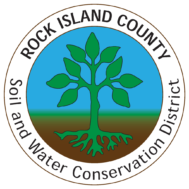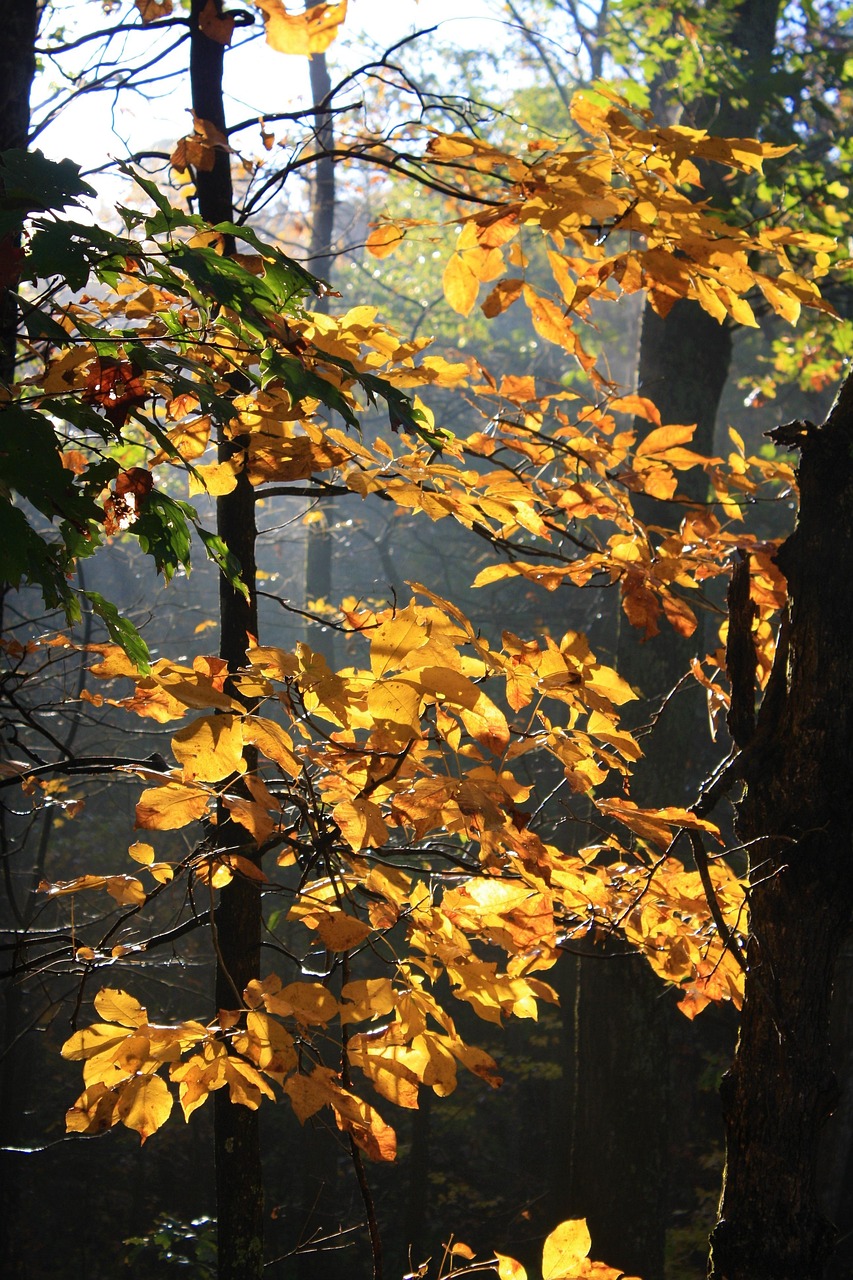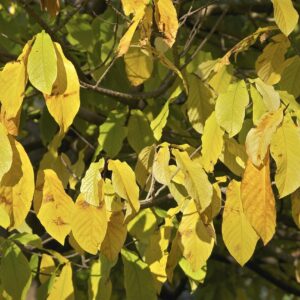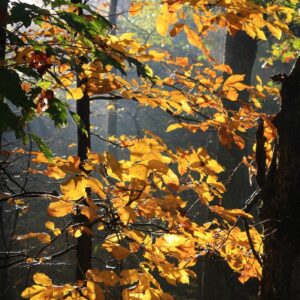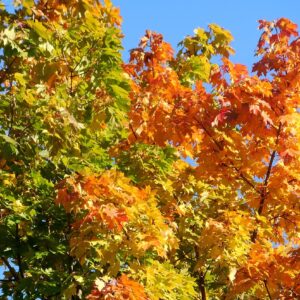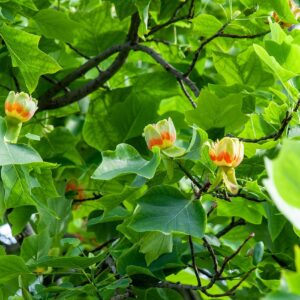Shagbark hickory (Carya ovata) is a deciduous tree native to eastern North America, known for its distinctive shaggy bark and its delicious, edible nuts. It belongs to the walnut family, Juglandaceae, and grows primarily in hardwood forests, although it can also be found in mixed forests and along river valleys. The shagbark hickory is a magnificent tree, known for its distinctive shaggy bark, strong wood, and edible nuts. It’s a slow-growing tree that provides valuable ecological benefits, supports local wildlife, and offers aesthetic value in large landscapes. Its ability to grow in a range of soil types, along with its long lifespan and rich history, make it a treasured species in North American forests and gardens.
Physical Characteristics
Size and Shape: Shagbark hickory is a large, upright tree that can reach heights of 70 to 100 feet (sometimes even taller), with a spread of 40 to 60 feet. It has a straight trunk and a narrow, pyramidal to rounded crown. In mature trees, the trunk is often covered with deeply furrowed, shaggy bark that peels away in long strips, which gives the tree its common name, “shagbark.”
Bark: The bark is one of the most distinguishing features of the shagbark hickory. On mature trees, it forms long, thin strips that curl away from the trunk, giving the tree a “shaggy” appearance. The color of the bark is grayish to light brown, with the shaggy texture becoming more pronounced as the tree ages. The bark of younger trees is smoother and darker.
Leaves: The leaves of the shagbark hickory are compound, typically made up of 5 to 9 leaflets arranged in a pinnate formation. The leaflets are long, narrow, and have finely serrated edges. They are dark green in summer and turn yellow to golden in the fall, providing a beautiful display of color. The leaves are 8 to 14 inches long and 4 to 8 inches wide in total.
Flowers: Shagbark hickory is a monoecious tree, meaning it has both male and female reproductive structures on the same tree. The male flowers are long, yellow-green catkins that hang down, while the female flowers are much smaller and located at the ends of the branches. The flowers appear in late spring, around May to June, but are not particularly showy.
Fruit (Nuts): The tree produces large, round nuts that are encased in a thick, four-parted husk. The nuts themselves are edible and have a rich, sweet flavor, but they can be difficult to extract due to the hard shell. The nuts ripen in late summer to early fall, and they fall to the ground when ready. Wildlife, including squirrels, chipmunks, deer, and birds, readily feed on the nuts.
Habitat and Growth
Soil and Water Preferences: Shagbark hickories grow best in well-drained, moist soils, although they can tolerate a range of soil types, from sandy to clay soils. They are often found in upland forests, dry ridges, and slopes, but also thrive in moist valleys and along streambanks. While the tree prefers deeper soils, it can also grow in less fertile areas, provided the soil has good drainage.
Light Requirements: Shagbark hickories prefer full sun or partial shade. They are slow-growing trees, particularly in the younger stages, and may take many years to reach their full height and maturity. Full sun helps them grow faster, although they can also tolerate shaded environments, especially when they are young.
Environmental Role and Wildlife
Wildlife Support: The nuts produced by shagbark hickory are highly valued by wildlife. Many animals, such as squirrels, deer, raccoons, and a variety of birds, eat the nuts, which are an important food source, especially in fall and winter. The tree’s dense canopy and large trunk also provide shelter for birds and small mammals.
Erosion Control: With its extensive root system, shagbark hickory helps stabilize the soil in areas prone to erosion. Its deep roots can hold the soil in place along ridges and streambanks, which helps prevent soil loss from rain or wind.
Uses in Landscaping and Other Areas
Ornamental Value: Shagbark hickory is sometimes planted in parks and large gardens for its interesting bark, stately size, and golden fall color. However, due to its large size and the fact that it needs plenty of space, it is better suited for natural landscapes or large properties.
Wood: The wood of the shagbark hickory is highly valued for its strength, hardness, and flexibility. It’s used for various purposes, including making tool handles, furniture, cabinets, and flooring. The wood is also commonly used for smoking meat due to its rich, smoky flavor when burned.
Edible Nuts: The nuts are edible, with a sweet, rich taste. They can be eaten raw or roasted, and are sometimes used in baking or in making hickory nut oil. However, extracting the nuts from their hard shells can be a challenge, requiring tools or a lot of patience.
Growth and Maintenance
Slow Growth: Shagbark hickory is a slow-growing tree, particularly in the early years. It may take decades to mature, and it often doesn’t produce nuts until it is 30 years or older. Despite its slow growth, the tree is long-lived and can live for several centuries under ideal conditions.
Pest and Disease Resistance: Shagbark hickories are generally resistant to many pests and diseases. However, they may occasionally face issues with hickory bark beetles or aphids. In rare cases, they can develop fungal diseases or suffer from stress due to drought. Proper spacing, good soil conditions, and avoiding root damage can help keep the tree healthy.
Cultural and Historical Significance
Indigenous Use: Native American tribes used the nuts of the shagbark hickory for food, often incorporating them into their diets in various ways. The bark and wood were also used for making tools, baskets, and even medicinal preparations. The tree was considered an important part of many Indigenous cultures.
Colonial Use: Early American settlers valued the shagbark hickory for its tough wood, which was used for crafting tools, furniture, and wagon wheels. The tree’s nuts were also collected and used in food preparation.
